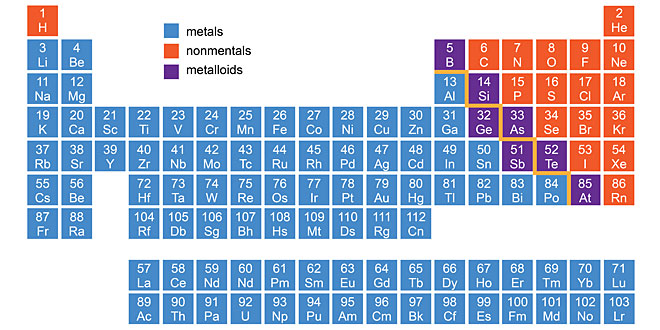Question: Differentiate between metal and non metals on the basis of their physical properties?
Answer: The difference is as follows:
Question: What is the difference between physical state of metals and non-metals at room temperature?
Answer: The physical state of metal and non-metal at room temperature:
Metal are solid at room temperature except mercury, which is liquid. Where as non-metals are found solid, liquid, gaseous state at room temperature, like carbon, phosphorous etc., are solids, bromine is a liquid while hydrogen, nitrogen etc., are gases.
Question: What do you mean by reactivity series of metals.
Answer: An arrangement of metals in a decreasing order of reactivity is called the reactivity series of metals. The reaction of metals with Oxygen, water and acids shows that metals have different reactivity. Potassium and sodium are the most reactive whereas silver and gold are least reactive.
Question: What is the advantage of galvanized iron over tin plated iron?
Answer: Advantage of galvanized iron is that it does not rust, but if there is a scratch on the zinc layer, it will rust.
Question: What are noble metals? Why are they used to make ornaments?
Answer: Silver and gold are present at the bottom of the reactivity series of metals. They are unreactive metals and do not react with water, acids and alkalis. They therefore, occur in the free state of nature. They are known as noble metals. Platinum has similar properties and is also a noble metal.
They are mainly used to make ornaments, as they are unreactive, the ornaments made from them do not lose their shine easily.
 Class Notes NCERT Solutions for CBSE Students
Class Notes NCERT Solutions for CBSE Students



